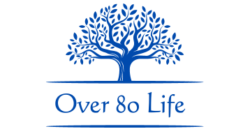Cash-Value Accumulation in Permanent Life Insurance

Permanent life insurance is unique compared to term life insurance because it not only offers a death benefit but also includes a feature known as cash-value accumulation. This feature is a powerful financial tool that provides policyholders with additional options for savings, investments, and accessing funds. Understanding this can help policyholders make informed decisions about their insurance investments. In this detailed exploration, we will look into various aspects of cash-value accumulation and how it applies to different permanent life insurance policies.
Introduction to Cash-Value in Life Insurance
The cash-value component of a permanent life insurance policy is essentially a savings account within the policy. Over time, a part of the premium payments you make gets allocated to this cash-value, which grows either at a fixed rate or a rate that depends on the market or index performance, depending on the type of policy you hold. This accumulated cash can serve multiple purposes, enhancing the policy’s versatility and appeal.
Understanding the nuances of permanent life insurance, including its cash-value component, is crucial for policyholders. For a deeper dive into the foundational concepts, such as Insurable Interest, which underpin these policies, exploring additional resources is highly recommended.
Different Types of Permanent Life Insurance Policies
Let’s take a closer look at how various permanent life insurance policies handle cash-value accumulation:
| Policy Type | Features | Cash-Value Growth |
|---|---|---|
| Whole Life Insurance | Fixed premiums, guaranteed death benefit, and cash-value growth. | Grows at a guaranteed rate set by the insurance company. |
| Universal Life Insurance | Flexible premiums and death benefit. Interest rate may vary. | Growth is based on current market or specified interest rates, with a guaranteed minimum. |
| Variable Universal Life Insurance | Allows investment in stock and bond markets for potentially higher returns. | Growth is tied to the performance of the chosen investment options. |
| Indexed Universal Life Insurance | Growth is tied to a stock market index like the S&P 500, offers downside protection. | Growth potential is higher but capped, based on the index’s performance with a guaranteed minimum. |
| Guaranteed Universal Life Insurance | Focuses on providing a death benefit with minimal cash-value accumulation. | Minimal growth, designed for stability and long-term death benefit provision. |
When considering the cash-value component, it’s also vital to understand the contestability period of a life insurance policy. This period can impact your policy’s benefits and your beneficiaries’ security.
Key Elements Affecting Cash-Value Accumulation
- Cash Surrender Value: The amount you would receive if you decided to terminate your policy before it matures or before the insured person passes away. It is usually less than the total accumulation value due to fees and charges.
- Accumulation Value: Represents the total cash value of your policy, including premiums paid, dividends received, and interest earned.
- Paid-Up Additions: Extra chunks of life insurance purchased using dividends, which also have a cash value and contribute to the overall growth of cash value in the policy.
- Life Insurance Dividends: Not guaranteed, but if paid, they can be used in various ways, including to buy additional insurance (paid-up additions) or reduce premiums.
- Premium Payments: Regular payments made to maintain the policy, a part of which contributes to cash-value accumulation.
How to Access Cash-Value
The flexibility to access accumulated cash-values is a significant benefit of permanent life insurance policies. Here are some methods:
- Loan Against Life Insurance: Borrowing money from your policy’s cash-value. Interest accrues but loans are tax-free.
- Cash Value Withdrawal: Taking out part of the cash-value, which may reduce the death benefit but can be tax-free up to the amount of premiums paid.
Challenges and Considerations
While the ability to accumulate cash-value offers many benefits, there are also potential drawbacks and pitfalls you need to be aware of:
- Cost of Insurance (COI): Includes mortality charges, which can increase as you get older, and administrative fees, all of which reduce the cash-value.
- Policy Lapse Risk: If not managed properly, especially in policies with flexible premiums, your policy could lapse, leaving you without coverage.
- Tax Considerations: While loans are generally tax-free, withdrawals that exceed the policy basis are taxable. Additionally, if a policy is classified as a Modified Endowment Contract (MEC), it could be subject to different tax rules.
Tax Benefits and Estate Planning
The growth of cash-value in permanent life insurance is tax-deferred, offering an efficient way to accumulate wealth. When planning your estate, considering how life insurance fits into your overall strategy is essential. Proceeds from life insurance, including accumulated cash-value, are generally income tax-free to beneficiaries, making it a tool for legacy planning.
Conclusion
Cash-value accumulation in permanent life insurance is an integral feature that offers policyholders not just a death benefit but also a financial planning tool. By choosing the right type of policy and understanding the components that affect cash-value growth, you can better manage your policy to serve your long-term financial goals. It’s advisable to consult with a financial advisor to navigate the complexities of permanent life insurance and to tailor a policy that best fits your needs.
Understanding the implications of accessing your policy’s cash-value, the potential impact on your policy’s performance, and considering the tax implications are crucial steps in making the most out of your permanent life insurance policy. With the right planning and management, the cash-value component can significantly enhance your financial security and contribute to your financial legacy.
Frequently Asked Questions
When considering life insurance, understanding the various types of policies and their features is crucial for making an informed decision. Whole Life Insurance, Universal Life Insurance, Variable Universal Life Insurance, Indexed Universal Life Insurance, and Guaranteed Universal Life Insurance are some of the primary options available, each offering unique benefits and drawbacks. For instance, Whole Life Insurance provides a fixed death benefit and a cash value component that grows at a guaranteed rate, while Universal Life Insurance offers more flexibility in premium payments and death benefits.
The cash surrender value is an essential aspect of life insurance, representing the amount a policyholder can receive if they decide to terminate the policy before it matures or the insured event occurs. This value is particularly relevant in policies with a savings component, such as Whole Life and Universal Life insurances, where part of the premiums contribute to the accumulation value of the policy.
Paid-Up Additions are another feature, allowing policyholders to use dividends from their Whole Life Insurance to purchase additional coverage, which also accumulates cash value. Life Insurance Dividends, while not guaranteed, can be a significant benefit for policyholders, providing options for receiving cash, reducing premiums, or enhancing the policy’s value.
A loan against life insurance, often referred to as borrowing against the policy’s cash value, provides a way for policyholders to access funds without a traditional loan application process. However, it’s crucial to understand the implications, such as policy loan interest rates and the potential for policy lapse if the loan plus interest exceeds the cash value.
Premium payments are the lifeblood of any life insurance policy, directly affecting features like the Cost of Insurance (COI), which includes mortality charges and administrative fees. Overfunded Life Insurance policies, where premiums paid exceed the minimum required, can lead to a larger cash value accumulation and potentially a policy endowment, where the cash value equals the death benefit.
Understanding the tax implications of life insurance is also vital. For example, the Modified Endowment Contract (MEC) status can affect the tax treatment of distributions, including loans and partial withdrawals. Meanwhile, the tax-deferred growth of the policy’s cash value and the tax-free policy loans (under certain conditions) are significant advantages for long-term financial planning.
Policyholders should also be aware of nonforfeiture options, which provide alternatives to surrendering the policy, such as taking a reduced paid-up insurance or extending term insurance. Furthermore, the 1035 Exchange allows for the tax-free transfer of cash value from one life insurance policy to another, offering a way to adjust coverage as needs change without incurring immediate tax liabilities.
Advanced strategies, such as premium financing and the incorporation of riders like the Annual Renewable Term (ART) Rider, can further customize a policy to fit specific financial goals and circumstances. Additionally, understanding the policy’s internal rate of return (IRR) can help evaluate its efficiency as an investment.
Choosing the right life insurance settlement option is crucial for ensuring that beneficiaries receive the death benefit in a manner that aligns with the policyholder’s wishes, whether as a lump sum, annuity, or other structured payout. Accelerated Death Benefits, another important feature, allow for early access to the death benefit under specific conditions, such as terminal illness, providing financial relief when it’s most needed.
In conclusion, navigating the complex world of life insurance requires a thorough understanding of the various policies, features, and strategies available. By carefully considering factors such as the type of insurance, premium payments, cash value components, tax implications, and nonforfeiture options, individuals can tailor their life insurance coverage to meet their financial goals and provide security for their beneficiaries.



